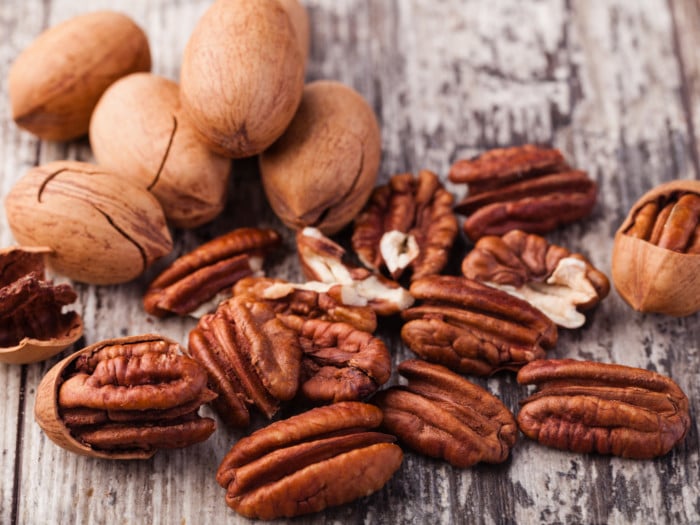If you have ever wondered about the difference between pecan and walnut, there are some key points where these two popular nuts diverge.
Difference Between Pecan and Walnut
While these two nuts are often grouped together as delicious options full of healthy fats, there are actually quite a few differences between pecans and walnuts.
Pecans
In terms of appearance, pecans are darker in color than walnuts, but their shape is small, oblong, and somewhat flat after they’ve been removed from their shell. A single serving of pecans – approximately 1 ounce – has roughly 200 calories, as well as more than one-quarter of the healthy mono and polyunsaturated fats that you are recommended to consume each day. Pecans are also surprisingly good for your protein intake, with about 5% in every serving. These nuts are also rich sources of zinc, magnesium, potassium, and vitamins A, B, and E. Pecans also have slightly more dietary fiber and sugar than walnuts. [1]

Pecans nutrition profile has oleic acid, antioxidants, and packed with numerous health promoting phytochemicals. Photo Credit: Shutterstock
In terms of flavor, pecans tend to be slightly more bitter, and when you eat these nuts, there is more of a waxy texture on the outside skin. If you are allergic to pecans, the symptoms of this nut allergy will almost always appear within the first hour following consumption and may include side effects such as hives, sweating, nausea, vomiting, dizziness, unconsciousness or anaphylaxis. [2]
Walnuts
Walnuts, on the other hand, have a pale golden brown or yellowish color once removed from their shell, and they are easily crumbled or ground, more so than pecans. An ounce of walnuts has slightly fewer calories than pecans, coming in at about 200, but they have about the same amount of “good” fats and omega-3 fatty acids. The protein content of walnuts is nearly double to that of pecans, making them one of the most protein-dense nuts available. [3]
While the mineral content in walnuts is not as impressive or diverse, they do contain higher levels of B vitamins than pecans, particularly thiamine. The flavor of walnuts is slightly sweeter than pecans, but the symptoms of a walnut allergy are very similar, including potentially life-threatening anaphylaxis for those who are allergic. [4]
